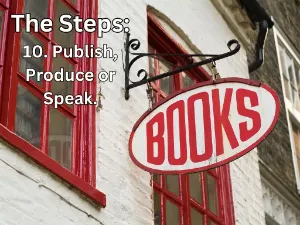Op-ed and opinion ghost writing services.
The art and science of the op-ed, political or not.
By- Hon. Jacob Gross
The opinion piece is an effective tool for communicating your message and advancing your strategic objectives. Commonly called an op-ed because newspapers published them opposite the editorials, this piece allows you to express an opinion. Unlike editorials, which present opinions endorsed by the publication and determined by an editorial board, the op-ed allows someone to give their personal opinion. Op-eds generally synthesize existing public information, and do not break news.
An op-ed may be either topical or “evergreen.” The latter has a topic that will be relevant even if published years from now, as opposed to commentary on the latest news. Someone without the clout to easily publish op-eds should start by writing an evergreen one, because you may spend weeks or months before you find an outlet that will publish it. So consider not writing on, say, a bill that is up for vote in Congress that week, and instead write in general about the issue the bill addresses.
Shop around
Many publications, even some of the nation’s most prominent, publish op-eds submitted by the general public. However, someone without major credentials or special connections is unlikely to gain the attention of the New York Times or Washington Post. If you fall into that category, then you will need to shop around your op-ed.
You may submit to dozens of outlets before one accepts it. Opinion editors generally expect your op-ed not to be simultaneously under consideration by other outlets. Therefore, you will need the patience to do one submission at a time. And when an outlet 
The submission process
The submission process varies by outlet. Some ask that writers send only a pitch, whereas others will want the full op-ed. If you click around the outlet’s website, you will probably find instructions for submission. You can also check the OpEd Project for a compiled list.
Having op-eds published can be a fruitful endeavor. They are a staple of political campaigns. You can inject a new perspective into a public debate, and advance your issue campaign. You can build a reputation as a thought leader or subject matter expert the media will call upon. If an outlet likes your writing enough, you might even receive an offer to become a regular columnist. However, do not expect to make money writing op-eds, as most outlets will not compensate you for it.
If you use a ghostwriter for your op-ed, you will be in good company. Any op-ed by a prominent person, such as a politician, was probably written by a ghostwriter. At most, the person taking attribution may have contributed some talking points. So using a ghostwriter is not so much a shortcut as it is standard operating procedure.
Format
An op-ed is succinct. The publication will have specific guidelines, but likely you will write around 500-800 words. That translates to about 1 to 1.5 pages typed single-spaced on letter paper. If your op-ed will physically be in print, the word count may vary based on available space in that issue. The editor might ask you to change the length, so a good strategy is to write a slightly longer op-ed and then edit it down before submission. In this way, if an editor needs you to add 150 words in a couple of hours, you will have content at the ready.
Given the confines of an op-ed’s word count, making your point quickly is paramount. With this in mind, do not hesitate to delete liberally. You may spend an hour crafting a beautiful paragraph, then realize it is superfluous and excise it. Do not feel like you are killing your children by removing a passage: think of it as a cathartic release.
The opinion editor may also want you to change some content before publishing the op-ed. They may even insert whole sentences of their own, or tweak the message of the piece. If this happens, do not take it as a personal affront.
Op-eds generally follow the same structure:
Title
The title of the op-ed should pique the reader’s interest. It should contain some sense of the piece’s topic and argument (e.g. “Want Corporations to Know Your Menstrual Cycle? There’s an App for That”). It cannot be vague, even if that vague title gives you a warm, fuzzy feeling (e.g. “Save Our Children”). Some outlets will write their own title for your op-ed, relieving you of that burden.
Lede
The lede, sometimes called the hook, is what brings the reader into the op-ed. It tends to reference specific topical events, then transition to the argument. For writers who might spend months shopping around an op-ed, a common strategy is to write an evergreen piece and then write a topical lede at the time of submission.
Thesis
The thesis is the overarching position you are taking in the op-ed. It is the reason you are writing. Do we need to reform the education system? Does society need to change what we prioritize? Is there a country we need to invade? That is the thesis. You need to take a clear stance in your op-ed. The point is not to explore a topic, or give equal credence to every side. Contained within the thesis is a Call to Action – the thing you want the readers, and society at large, to do. This call might be very explicit, or merely implied.
It is helpful if you have some expertise related to the topic of your thesis. While not a requirement, the piece will carry more authority if you have a degree or two in your op-ed’s subject. On the other hand, you will have limited credibility if you have no education in a field but take a bold stance, such as someone without a medical background claiming COVID-19 is hysteria.
Argument
Simply stating and restating your thesis is not sufficient for an op-ed. You need evidence to support the thesis. That is where the argument comes in. Here, you will present the proof for your thesis. While this evidence might only be a logical deduction, there should still be palpable facts to support your thesis.
For your facts, you should rely on verified ones with sources. You might have statistics, case studies, data, or scientific research. Even better if you can cite sources that are relatively recent. Personal anecdotes are another staple, although they may not be compelling if your experience is unique. Also good is if you can quantify something: The reader will have a better grasp of your argument if you can say “crime is up 15%” versus “crime is up.”
To find facts, Google is your friend, although you need to be discerning. Academic sources are preferable to newspaper articles, as the latter tend to be much sloppier with accuracy. You should also avoid hyper-partisan sources that are pushing an agenda. Ideally your sources are on the Internet and available free, because your reader is not going to a library or paying for an article to learn more.
Generally you will organize the argument into Point 1, Point 2, and Point 3. You do not always use three, although two will not be compelling, and too many will make your op-ed too long. You do not need to cite every piece of evidence, only those most salient. Each point is roughly a paragraph in length, but might be more, and can contain multiple pieces of evidence. At the end of each point should be a mini-conclusion summarizing it and reiterating how the evidence supports the thesis.
The “To Be Sure” paragraph
Whatever your thesis is, there is probably a cogent counterargument to it. In recognition of this, after presenting the writer’s argument, an op-ed tends to have a “To Be Sure” paragraph. This paragraph acknowledges the counterargument, and then refutes it in part or whole. The first sentence often begins with a subordinate clause that conveys the same meaning as “to be sure.” Not every op-ed includes this paragraph, but doing so is a good idea.
Conclusion
For the conclusion, you will reiterate your point and the action we need to take. This is your last opportunity to leave an impression. It is not the time to introduce a new argument or fact. A snappy final sentence, while unnecessary, will help the reader remember your piece.
And speaking of conclusions…
Publishing an opinion piece can open the door to new opportunities. It may lead to fame, momentum for your campaign, and the remote possibility of money. But the op-ed is not mere thoughts on a page: it has a unique format you need to follow. And if you master that, you can communicate your viewpoint to thousands.
My name is Jacob Gross and I write opinion pieces. I’ve been published in the op-ed pages of many periodicals and websites. If you would like for me to help you, simply contact Ghostwriters Central.











